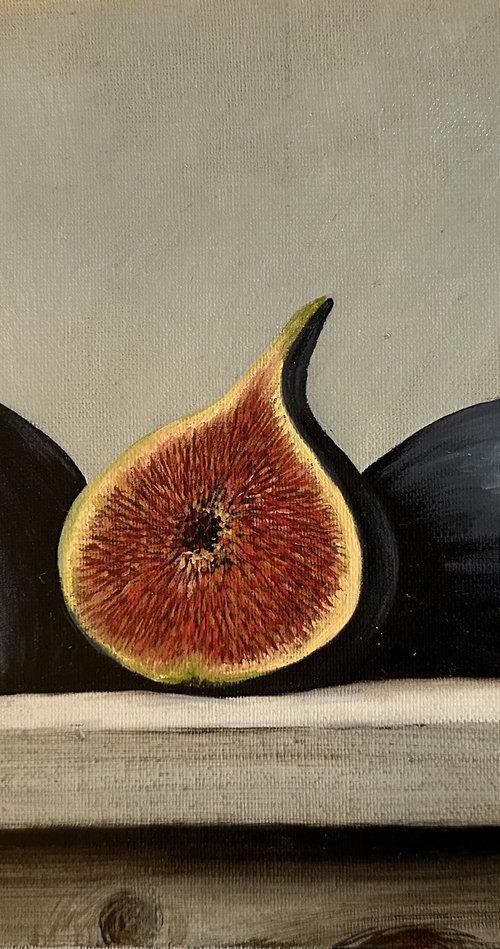Find Timeless and Rare Oil Paintings for Sale Online
Find Timeless and Rare Oil Paintings for Sale Online
Blog Article
Exploring Everything About Oil Paints: An Overview to Comprehending Their Beauty and Value
Oil paintings have mesmerized audiences for centuries, supplying a glance right into the creative proficiency of various ages. Their rich history is intertwined with innovative strategies and profound psychological expression. Recognizing the products and approaches behind these artworks can boost recognition. In addition, the market for oil paints provides opportunities for enthusiasts and investors alike. As one explores this remarkable globe, the question develops: what makes an oil paint really valuable?
The Background of Oil Paint: A Journey With Time
Oil paint has roots that date back to ancient times, it genuinely prospered during the Renaissance, when artists found its convenience and abundant shade potential. Early instances can be mapped to the 7th century, with strategies advancing especially across societies. The tool became noticeable in Northern Europe in the 15th century, particularly with the works of artists like Jan van Eyck, that originated its use for in-depth realism and vibrant hues. This duration noted a departure from tempera paints, enabling better depth and texture. As oil paint spread, it influenced countless musicians, bring about work of arts by renowned figures such as Leonardo da Vinci and Rembrandt. The medium's tradition proceeds, forming the art globe well right into modern times.
Comprehending Oil Paints: Products and Techniques
As artists explore the globe of oil paints, they come across a varied selection of products and strategies that specify this tool. The main elements of oil paint include pigments, which provide color, and drying out oils, such as linseed, that bind the pigments and promote application. Numerous ingredients can modify the paint's structure and drying out time, improving versatility. Techniques like glazing, where clear layers are accumulated, and impasto, which involves using thick paint, permit various aesthetic impacts. In addition, the usage of brushes, combination knives, and also fingers can produce one-of-a-kind appearances and coatings. Recognizing these methods and materials enables musicians to completely reveal their creativity and attain the preferred effect in their art work.
The Duty of Shade in Oil Paints
Shade plays an essential function in oil paints, affecting both aesthetic appeal and emotional vibration. Understanding shade concept essentials, consisting of the relationships in between hues, can boost a musician's ability to communicate state of mind and ambience. In addition, grasping shade blending methods permits better depth and richness in a painting's combination.

Shade Concept Essential
Recognizing shade theory is vital for artists working with oil paints, as it develops the foundation for creating unified and visually engaging compositions. Shade theory includes the research of how colors interact, the shade wheel, and the relationships in between key, second, and tertiary colors. Musicians use corresponding colors to enhance contrasts and create focal factors, while comparable colors advertise unity and cohesiveness within a piece. Additionally, the principles of warm and awesome colors influence the perception of deepness and space in a painting. Comprehending these concepts enables musicians to control color effectively, assisting the visitor's eye and interacting their designated message. Proficiency of shade concept eventually enriches an artist's capability to communicate emotions and concepts through their job.
Emotional Effect of Shade
The psychological impact of shade in oil paints plays an essential role in just how customers link and perceive with art work. Shades evoke certain sensations and state of minds, affecting the viewer's emotional state. For circumstances, warm shades like reds and oranges can create a feeling of heat and energy, while trendy tones such as blues and eco-friendlies often stimulate calmness or self-contemplation. Artists strategically pick color schemes to boost narrative components, guiding the target market's emotional trip. The saturation and comparison of colors additionally magnify these results, drawing interest and creating focus. Inevitably, the interplay of colors in oil paints not only enhances their visual charm but also acts as a powerful medium for psychological expression, enriching the customer's experience and analysis.
Shade Mixing Techniques
While several facets of oil paint add to the total structure, grasping shade blending strategies is important for attaining preferred effects and deepness. Color blending can be approached through numerous techniques, consisting of the additive and subtractive processes. Additive mixing includes incorporating shades of light, while subtractive mixing counts on pigments, where shades blend to create new shades. Artists typically use a limited combination to create harmonious jobs, recognizing the relationships between main, secondary, and tertiary colors. Methods such as glazing and scumbling additionally boost deepness and brightness. By masterfully mixing colors, an artist can evoke emotions, create focal factors, and attain a sense of realistic look, eventually raising the painting's aesthetic and emotional influence.
Famous Oil Painters and Their Iconic Functions

Well known for their proficiency of shade and method, oil painters have actually developed several of one of the most celebrated artworks in background. Prominent musicians like Vincent van Gogh mesmerized target markets with his stirring brushwork in "Starry Night," while Claude Monet's "Impression, Sunup" prepared for Impressionism. Leonardo da Vinci's "Mona Lisa" continues to be an enduring sign of creative genius, showcasing his skill in catching human expression. Rembrandt's "The Evening Watch" shows his ingenious use of light and shadow. Other notable figures consist of Pablo Picasso, that transformed modern art with his bold testing in jobs like "Les Demoiselles d'Avignon," and Georgia O'Keeffe, whose vivid representations of flowers and landscapes aided define American modernism. Each musician's unique style contributed substantially to the oil paint landscape.
Just how to Evaluate the High Quality of an Oil Paint
Assessing the quality of an oil paint entails a mindful assessment of workmanship techniques, along with an evaluation of color and composition. Observing brushwork, layering, and the application of paint can disclose the artist's ability level. Additionally, the interplay of colors and the overall arrangement of components add significantly to the paint's aesthetic value.
Analyzing Workmanship Techniques
A precise analysis of craftsmanship strategies is vital for establishing the top quality of an oil paint. Evaluators need to first analyze the application of paint; thick, distinctive brushstrokes may recommend a proficient hand, while excessively consistent applications might show an absence of deepness. oil paintings for sale. The layering technique is likewise essential; the visibility of lusters and varied density can improve luminance and complexity. Furthermore, the high quality of the products made use of, such as the canvas and pigments, plays a significant role in sturdiness and total visual. Attention to information in elements like sides and changes in between colors reflects the artist's commitment to their craft. Inevitably, these techniques add to the paint's psychological effect and market value, functioning as indicators of the artist's ability and intent
Examining Color and Structure
While assessing the top quality of an oil paint, one must concentrate on the interplay of shade and make-up, as these components are essential to the artwork's general effect. Shade options can stimulate emotions and develop mood; therefore, the musician's scheme need to be taken a look at for harmony and comparison. A well-balanced structure directs the customer's eye and develops a feeling of unity. Artists typically use methods like the guideline of thirds or leading lines to improve visual rate of interest. In addition, the usage of light and shadow can add deepness, improving the three-dimensionality of the paint. Ultimately, an effective oil painting marries color and make-up, engaging the viewer and welcoming a deeper admiration of the musician's vision and method.
Caring for and Preserving Oil Paintings
Proper treatment and check here preservation of oil paints is important for maintaining their honesty and longevity. To safeguard these artworks, it is crucial to show them far from direct sunshine, which can cause fading and staining. Maintaining a steady environment with controlled temperature and moisture additional help in preventing damages. Cleaning ought to be done delicately utilizing a soft, completely dry fabric, avoiding any extreme chemicals that can hurt the paint or varnish. Regular examinations for signs of damage, such as splitting or flaking, are suggested. When keeping or transferring oil paints, proper extra padding and framing are needed to avoid physical injury. Eventually, diligent care adds to the visual appeal and worth of oil paintings gradually.
The Marketplace for Oil Paints: Spending and collecting
Recognizing the marketplace dynamics for oil paints is necessary for capitalists and enthusiasts alike. The worth of these artworks is affected by various aspects, including the artist's track record, historic value, and current fads. Collectors frequently seek pieces that reverberate personally while thinking about prospective admiration in value. Galleries and public auctions act as main locations for purchasing and marketing, with prices changing based on demand and rarity. Purchasing oil paintings calls for study into the market, along with an understanding of authenticity and provenance. In addition, arising musicians may use opportunities for significant returns, while established names can command high prices. Overall, a calculated approach to accumulating can generate both aesthetic pleasure and financial rewards.

Often Asked Questions
What Are the Ecological Influences of Oil Paint Materials?
The ecological influences of oil paint materials consist of the release of unpredictable natural compounds (VOCs), damaging waste generation, and resource extraction for pigments. These factors contribute to pollution and ecological degradation, increasing concerns amongst eco mindful artists and consumers.
Exactly How Do Different Canvases Influence Oil Painting Outcomes?
Different canvases affect oil painting results substantially. Surface area, absorbency, and structure high quality can modify paint application, drying out times, and color vibrancy. Musicians usually choose particular canvases to attain desired effects and enhance their imaginative expression.
Can Oil Paintings Be Brought Back if Harmed?
Oil paintings can certainly be recovered if harmed. Specialist conservators make use of numerous strategies to repair tears, clean surface areas, and address discoloration, ensuring that the artwork maintains its initial elegance and value for future generations.
What Are the Signs of an Initial Oil Painting?
The indicators of an original oil paint consist of visible brush strokes, appearance variants, and an unequal canvas weave (oil paintings for sale). Additionally, credibility might be validated with provenance, signatures, and the existence of a varnish layer one-of-a-kind to oil tools
Exactly How Has Technology Influenced Modern Oil Painting Techniques?
Technology has actually significantly influenced modern-day oil paint strategies by introducing digital tools for preparation, boosted materials for appearance and long life, and on-line platforms for offering and sharing art, consequently increasing musicians' creative possibilities and audience reach. Oil painting has origins that date back to old times, it absolutely thrived throughout the Renaissance, when artists found its versatility and rich shade capacity. The psychological impact of color in oil paints plays a critical function in just how viewers connect and perceive with artwork. While lots of aspects of oil painting add to the total structure, grasping color blending techniques is important for achieving wanted impacts and depth. Reviewing the quality of an oil paint includes a cautious evaluation of craftsmanship methods, as well as an evaluation of color and structure. While assessing the quality of an oil paint, one have to concentrate on the interaction of shade and make-up, as these components are essential to the artwork's total influence.
Report this page